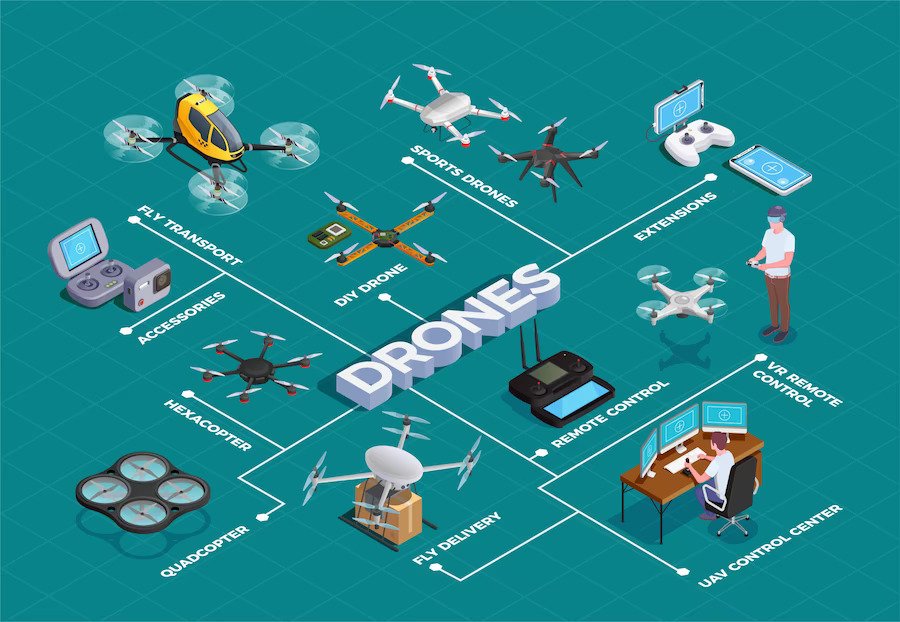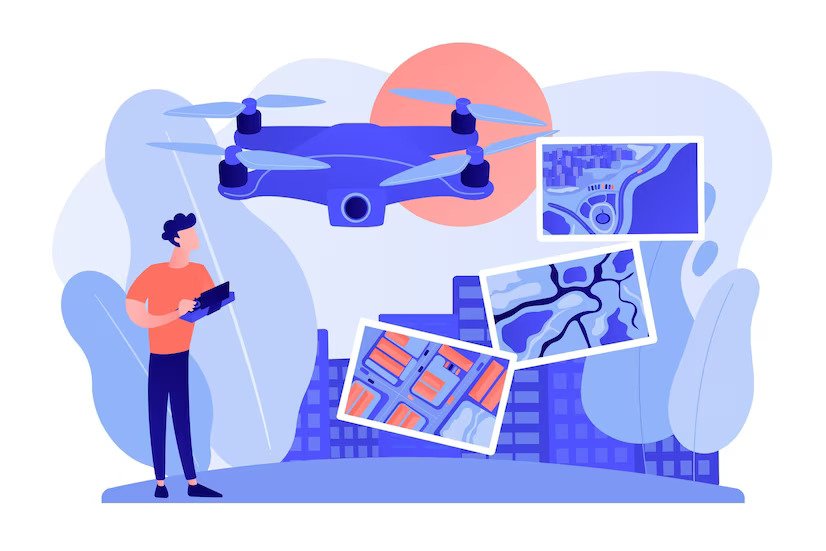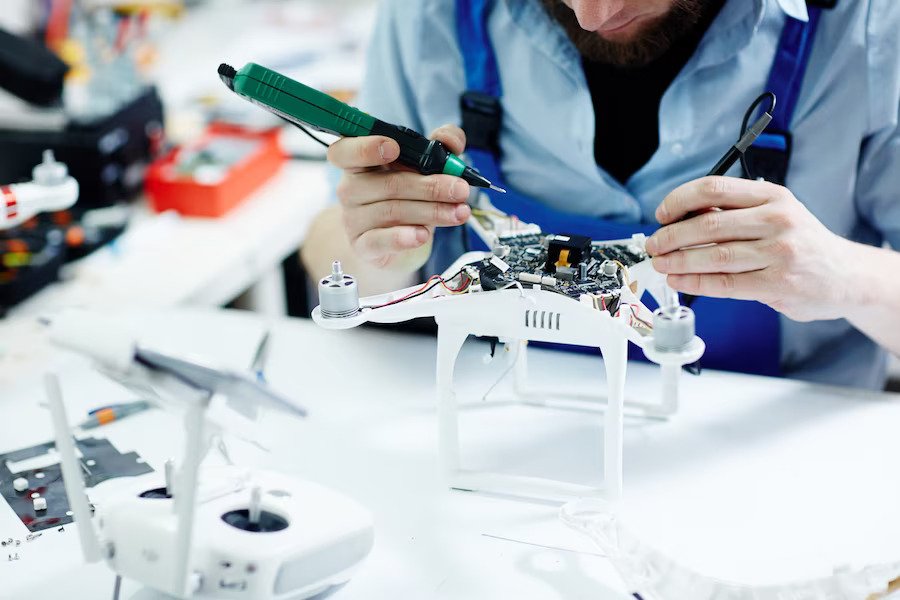Drones, AI, and Network Theory Take Center Stage in Modern Conflicts
The conflict in Ukraine has drawn attention to the rapidly evolving nature of modern warfare, where cutting-edge drone technologies, artificial intelligence (AI), and network theory models are playing increasingly pivotal roles. According to Dr Jose Luis Chavez Calva, an expert on network theory, these advanced tools are reshaping the battlefield, leading military strategists to develop new tactics to address the ever-changing landscape.
Drone Technologies on the Rise
For Dr. Jose, Drones have become essential assets in modern warfare, with various types serving different purposes. Fixed-wing drones, for example, are ideal for long-range surveillance and reconnaissance missions, while rotary-wing drones offer increased maneuverability for urban environments and close-quarters operations. Swarm drones, operating in coordinated groups, can overwhelm enemy defenses, and stealth drones are designed to evade radar detection for covert operations.
These drones have advanced payloads and weapon systems, such as high-resolution imaging sensors, miniaturized guided munitions, and electronic warfare systems that can disrupt enemy communications.
AI-Driven Warfare
According to Jose, AI algorithms, such as deep learning and reinforcement learning, are revolutionizing drone autonomy and decision-making. AI-powered drones can process vast amounts of data, make real-time decisions, and adapt to changing battlefield conditions. They can prioritize targets based on pre-defined criteria, assess collateral damage risks, and autonomously execute complex missions with minimal human intervention.
Machine learning algorithms can also process and analyze vast quantities of data, including drone-collected imagery and signals intelligence, to identify patterns and trends that might elude human analysts. AI-driven predictive analytics can help military strategists anticipate enemy actions and develop proactive strategies, reducing reaction time and increasing the likelihood of success.
The Role of Network Theory in Warfare
For Dr Jose, Network theory models have become critical tools for understanding the complex relationships and interactions between various entities in a conflict, such as drone systems, communication networks, and critical infrastructure. Graph theory models can help identify high-value targets, vulnerabilities, and chokepoints within these networks. In contrast, network optimization techniques can help design resilient, efficient, and secure communication systems that ensure drones, human operators, and other assets remain connected and coordinated.
Balancing Technology and Ethics
As drone technologies, AI, and network theory continue to advance, it is essential to develop ethical considerations and legal frameworks to address potential challenges. Policymakers and military leaders must tackle the moral implications of AI-driven warfare, privacy concerns, and the potential to abuse or misuse these powerful tools.
By staying informed about the latest developments in these technologies and collaborating to find innovative ways to leverage them for global security and stability, military strategists can ensure that future conflicts are managed responsibly and effectively while upholding the principles of international law and human rights.
Future Of Drone Technology
Drone technology has come a long way since its inception and has grown exponentially. In the past few years, drones have become more accessible to the public and have found uses in various industries, including agriculture, mining, construction, transportation, and entertainment. With their versatility, affordability, and ease of use, the future of drone technology is promising.
Delivery Industry
One area where drones are expected to revolutionize is the delivery industry. With the rise of online shopping, the demand for faster and more efficient deliveries has increased, and drones have emerged as a viable solution. Companies like Amazon, DHL, and UPS have already tested drone deliveries, and it’s only a matter of time before we see them become more commonplace. Drones can deliver packages directly to customers’ doorsteps, bypassing traffic and roadblocks and reducing delivery times.
Field of Agriculture
Another area where drone technology is expected to have a significant impact is in the field of agriculture. Drones with high-resolution cameras and sensors can gather data on crops’ health, moisture levels, and nutrient deficiencies. Farmers can use this information to optimize crop yields and reduce water and fertilizer usage, resulting in more sustainable agriculture practices.
Construction Industry
In the construction industry, drones can be used for surveying and mapping construction sites, monitoring progress, and inspecting buildings’ structures. This technology can increase safety and efficiency while reducing the time and cost of construction projects.
Entertainment Industry
Drones are also used in the entertainment industry to capture aerial footage of events, concerts, and sports games. Using drones in filming has revolutionized how movies and TV shows are made, with directors now able to capture stunning aerial shots that were previously impossible.
Artificial Intelligence
One of the most exciting areas of development in drone technology is the use of artificial intelligence (AI). AI-powered drones can perform complex tasks like inspecting infrastructure, monitoring wildlife, and detecting fires. These drones can analyze data in real time, making them more efficient and effective than traditional methods.
advanced sensors and autonomous capabilities
In addition to AI, drones are also being developed with advanced sensors and autonomous capabilities. This technology enables drones to fly in complex environments, avoid obstacles, and navigate challenging terrains, making them ideal for search and rescue operations and disaster relief efforts.
As drone technology continues to evolve, we can expect to see a range of new applications emerge. For example, drones may be used to remotely inspect offshore wind turbines, monitor wildlife populations, and even transport people in urban areas.
However, as with any new technology, there are also concerns about privacy, safety, and regulation. Governments worldwide are working to establish rules and regulations for drone usage, ensuring that they are used safely and responsibly.
Conclusion
In conclusion, the future of drone technology is promising. Drones are becoming more advanced, affordable, and versatile, potentially transforming a wide range of industries. While there are still challenges to overcome, such as regulatory and safety concerns, the benefits of drone technology are clear. As such, we can expect to see more and more innovative applications of drone technology in the years to come.



















